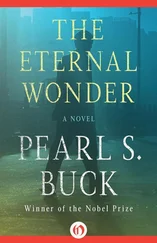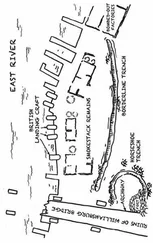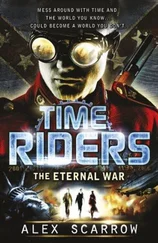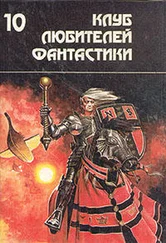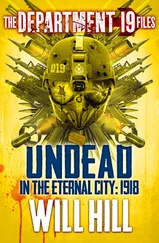He beat me all the time. Now I can look back and see it was a kind of sickness. He was brutal. He loved to beat people. He hit me daily, as if he’d hired me to be his punching bag. He would hit me for merely crying. And he immediately reneged on his promise to send me to middle-school night classes during my apprenticeship.
I had no choice but to endure, because I had nowhere to run. After two years, I was almost six feet tall and weighed 165 pounds.
It was as if my master didn’t notice the change. One day, he was in a bad mood and took it out on me as usual, even though I had done nothing wrong. I got angry, and for the first time in my life, I hit my master. He flew into a rage, beating me with a club, yelling, “I’m gonna kill you!” But I caught hold of the club and hit him back with it. Suddenly he burst into tears and apologized. He went prostrate, begging repeatedly for my forgiveness. His wife rushed in and asked me to show mercy to him. A woman who’d never once tried to intervene when I’d been beaten countless times was in tears trying to put an end to it as soon as her husband was the one getting hit. The instant I saw this, I became violently furious. Had I been beaten so many times by people like them? I kicked her to the floor and flogged the master with the club. He screamed through his tears for my forgiveness until he finally passed out.
I fled the shop and headed towards the station. The only place I could return to was my country home. But the police caught me before the first train arrived. Since I was a minor I wasn’t sent to prison, but the cops beat me until I fainted.
I had nowhere to go except the military. I applied to the Navy and was accepted.
I became a fireman on a cruiser. There too, I was beaten daily. There was no place as physically abusive as the Japanese military. They say the Army was terrible, but the Navy was even worse. This was supposedly due to the fact that Army soldiers had guns. Once they were in combat, bullets didn’t always come from the front. There was talk of men settling grudges with a shot from behind on the battlefield. That’s why Army beatings were said to be comparatively moderate. But most sailors didn’t carry arms, which was why our superiors could beat us without any restraint. I’m not sure if that was the reason. I was always getting beaten, of that you can be sure.
___
Three years after entering the Navy, I heard they were recruiting aviators. I dreamed of becoming a pilot and studied for the entrance exam like mad, spending what little free time I had after finishing my duties on the ship.
I’d heard that it was extremely competitive, but I passed the test. I think that was pretty impressive, if I do say so myself.
Thus, I became a pilot in training according to Imperial Navy tradition. Come to think of it, Miyabe also did that program. He was several classes ahead of me.
Training at the Kasumigaura Naval Air Unit was intense, but it was a piece of cake compared to the daily work on the cruiser.
I felt happy to be alive for the first time since graduating higher primary school. I thought, “This really is the place for me.” At the time, being a pilot required a willingness to sacrifice one’s life. During wartime, pilots constantly flew deep into hostile territory to fight the enemy head-on. Even when they weren’t, they always had death at their side. Aircraft back then weren’t very reliable. Accidents weren’t uncommon and more than a few pilots lost their lives during training. Yet I was never afraid. We weren’t practicing how to fly safely under peaceful conditions. We were training to put our lives on the line.
I decided to stake everything on flying. I’m not exaggerating when I say I threw myself body and soul into training.
I think most of my fellow trainees felt exactly as I did. They all dove earnestly into flight training. It was a literal struggle, because not all trainees would become pilots. The instructors also gauged our natural aptitude, and those deemed unsuitable were delegated to be spotters or radiomen on bombers or attack aircraft. The ones who didn’t become pilots wept.
Depending on the pilots’ skills and aptitude, the instructors then separated them into separate pipelines for fighters, bombers, and attack aircraft. The cream of the crop were chosen to pilot the fighters. And I became a fighter pilot.
___
After graduating, I was assigned to Hankou in China. This was in the beginning of 1941. In China I flew the Type 96 carrier-based fighter. It wasn’t as good as the Zero, but it was a very decent fighter. I shot down numerous Chinese planes with a Type 96 fighter.
Late that year, the Greater East Asian War began. When I heard about the attack on Pearl Harbor, I stamped my feet in frustration.
My dream had been to board the Akagi, an aircraft carrier with the 1st Air Fleet. I wanted to join that aircrew so I could fight the Americans. I was ready to die if I could be part of the Akagi crew.
But my dream didn’t come true. I was promoted from a Type 96 to a Zero fighter but never received orders to transfer to an aircraft carrier, and instead spent day after day fighting the Chinese Air Force. By then, the Chinese single-mindedly avoided engaging with Zero fighters, so I was never able to down any of their planes with a Zero.
Early the following year I was transferred to the 3rd Air Corps and sent to Borneo. The Tainan Air Corps had destroyed an Allied military base in the Philippines the previous year, and the Japanese military vigorously advanced, capturing territories in Southeast Asia and the Dutch East Indies. It was like our forces were invincible wherever they went.
As part of the Imperial forces’ invasion, we, too, advanced into Borneo, Celebes, Sumatra, Java. In Java, there were dark-skinned natives all over the place. Like the characters in Dankichi, the Adventurous Boy, both men and women wore very little clothing. They looked at us in wonder, too.
I ended up on a military base called Kupang on the island of Timor, which served as a foothold for our attack on Darwin, Australia. There for the first time I took on American and British fighters. On the first mission I downed a P-40. I had been told that combat with Allied aircraft was nothing like fighting the Chinese Air Force, but they weren’t really much trouble.
The Zero’s greatness impressed me all over again. It was really a magnificent fighter. American and British aircraft just couldn’t hold a candle to the Zero. When we tangled with them in a dogfight, we could easily get into shooting position behind them. We then blew them away with our 20-mm machine guns. I fought P-39s, P-40s, Hawker Hurricanes, and also the British Spitfires which had caused the German Luftwaffe so much agony over Europe. But none of them could equal the Zero.
The Zero was truly a heaven-sent warplane. The Zeros butchered many enemy planes on each mission. Our squadron must have downed over a hundred enemy aircraft while suffering fewer than a dozen casualties. I myself shot down five.
I always closed in tight on the enemy aircraft before firing. My squadron mates called it the Ishioka Ramming Tactic. Back then, my last name was Ishioka.
Most bullets failed to hit their targets. In training, we were taught to shoot at the target when it got within 100 meters. But in actual combat, out of fear most pilots started firing at a range greater than 200 meters. Of course, they missed. I would always get within 50 meters before firing. At such close range, the enemy plane fairly stuck out of the gun’s sights, which is why I rarely missed when I pulled the trigger.
In any case, combat was the best training. At the time, we were quite competent. Carrier pilots were said to be brilliant, but they had nowhere near our actual combat experience. I’m sure they were highly skilled when they were assigned, but it was, after all, proficiency in carrier launches and landings and being adept at mock dogfights.
Читать дальше
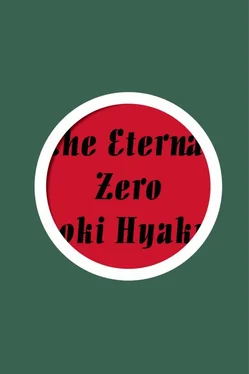
![Nick Cracknell - The Quiet Apocalypse [= Island Zero]](/books/28041/nick-cracknell-the-quiet-apocalypse-island-zero-thumb.webp)
